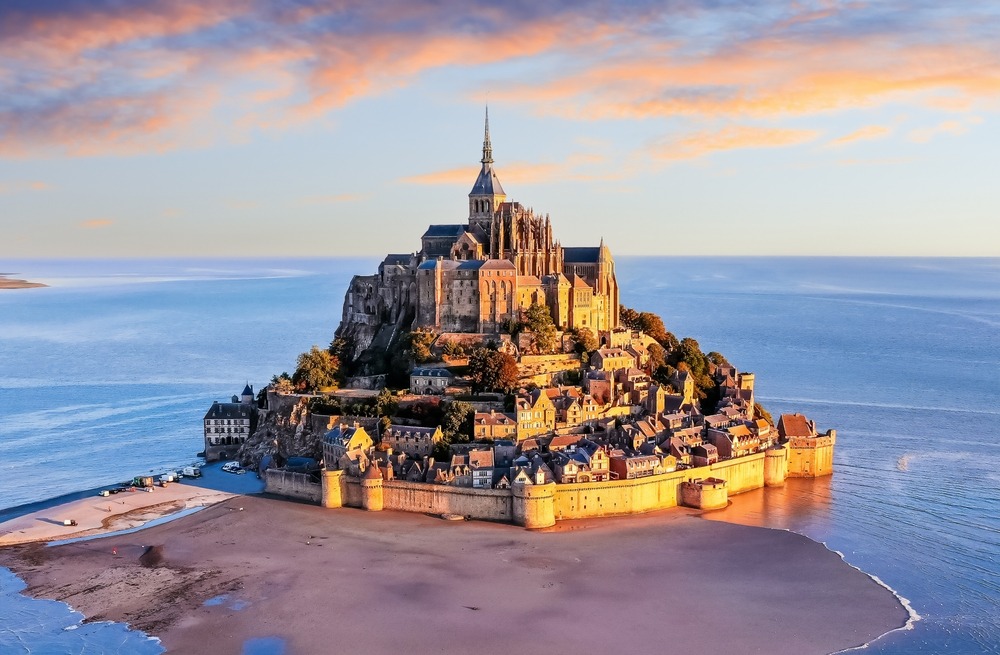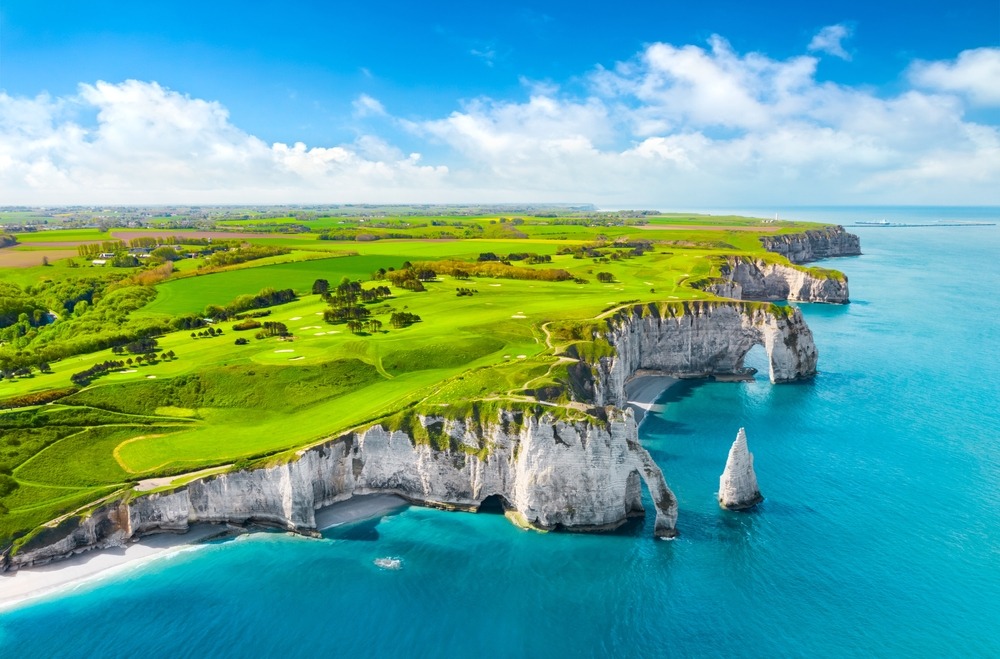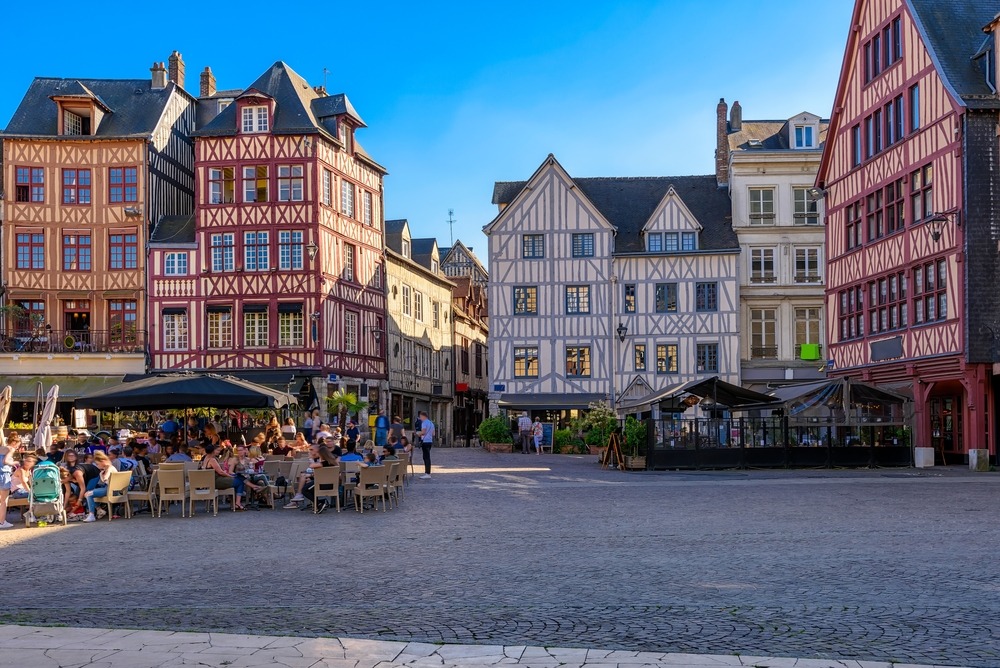Normandy, France: A Historic Land of Conquest, Courage, and Culture

History of Normandy
Normandy, situated in northwestern France along the English Channel, is a region steeped in a layered and turbulent history that spans millennia. Its name derives from the “Northmen” or Norsemen—Vikings who began raiding the area in the 9th century and eventually settled and intermarried with the local Frankish population. The region eventually became a powerful duchy and played a central role in shaping both French and English histories.
Ancient and Roman Foundations
Long before the arrival of the Norsemen, Normandy was inhabited by Celtic tribes, particularly the Belgae and Armorican peoples. By 56 BC, Julius Caesar had incorporated the region into the Roman Empire. Under Roman rule, the region developed into a network of roads, towns, and trade centers, including the notable settlements at Lillebonne and Bayeux.
Viking Invasion and the Duchy of Normandy
The 9th and early 10th centuries saw repeated Viking raids, especially along the Seine River. In 911 AD, the Viking leader Rollo was granted land by the French King Charles the Simple under the Treaty of Saint-Clair-sur-Epte, in exchange for his allegiance and the promise to defend the kingdom against further Viking incursions. This agreement established the Duchy of Normandy, with Rollo as its first Duke. His descendants adopted Christianity, the French language, and feudal customs, transforming the region into one of the most powerful principalities in medieval Europe.
Norman Conquest of England
Perhaps the most famous historical event associated with Normandy was the Norman Conquest of England in 1066. Duke William II of Normandy—later known as William the Conqueror—claimed the English throne and secured it following the Battle of Hastings. This event linked the destinies of England and Normandy for generations, resulting in a complex Anglo-Norman culture and political entanglements between the two realms.
Medieval to Early Modern Periods
Normandy retained its strategic importance throughout the medieval period. During the Hundred Years’ War (1337–1453), the region changed hands multiple times between English and French control. The port city of Caen and towns like Rouen saw significant conflict and destruction. Joan of Arc was famously tried and executed in Rouen in 1431.
Following the war, Normandy was reintegrated into the French kingdom. Its agricultural richness and coastal access kept it economically significant, while its religious communities—particularly Benedictine abbeys—helped it maintain cultural importance throughout the Renaissance.
World War II and the Normandy Landings
The 20th century brought Normandy back to the forefront of global history during World War II. On June 6, 1944—D-Day—the Allied forces launched Operation Overlord, the largest amphibious invasion in history, on the beaches of Normandy. This monumental event marked the beginning of the liberation of Western Europe from Nazi control. Towns like Caen, Bayeux, and Sainte-Mère-Église became emblematic of the fierce fighting and heroism of that campaign.
Modern Normandy
Today, Normandy is divided into two administrative regions: Upper Normandy and Lower Normandy, though they were officially merged into a single entity in 2016 simply called “Normandy.” It is known for its dairy farming, apple orchards, cider and calvados production, rich culinary traditions, and its deep historical roots. It draws millions of visitors annually who come for both its tranquil landscapes and poignant historical sites.

Top 25 Attractions in Normandy, France
-
Mont-Saint-Michel – One of France’s most iconic landmarks, this medieval abbey sits on a tidal island and is a marvel of Gothic architecture, pilgrimage history, and engineering.
-
D-Day Landing Beaches – The five Allied landing beaches—Utah, Omaha, Gold, Juno, and Sword—are solemn sites that commemorate the June 6, 1944 invasion. Each beach offers memorials and museums.
-
Caen Memorial Museum – Located in the city of Caen, this museum is a powerful tribute to peace and an essential destination for understanding World War II and the Battle of Normandy.
-
Bayeux Tapestry Museum – Home to the 70-meter-long tapestry that narrates the Norman conquest of England, this museum is a must-visit for lovers of medieval history and art.
-
Rouen Cathedral – This towering Gothic masterpiece, immortalized by Claude Monet, dominates the skyline of Rouen and holds the tomb of Richard the Lionheart.
-
American Cemetery at Colleville-sur-Mer – Overlooking Omaha Beach, this cemetery honors over 9,000 American soldiers who gave their lives in World War II.
-
Pegasus Bridge Museum – Commemorating the British airborne forces who captured the bridge during the early hours of D-Day, this site is a vital piece of Allied success history.
-
Jumièges Abbey – A hauntingly beautiful ruin, this 7th-century Benedictine monastery reflects Normandy’s ecclesiastical power in the Middle Ages.
-
Sainte-Mère-Église – One of the first towns liberated on D-Day, it’s known for the paratrooper mannequin hanging from the church steeple in homage to Private John Steele.
-
Arromanches-les-Bains and the Mulberry Harbour – This seaside village showcases the remnants of the prefabricated harbor built by the Allies to support the invasion.
-
Giverny and Monet’s Garden – The home and gardens of Claude Monet are preserved as he left them, including the famous Japanese bridge and water lilies.
-
Château de Falaise – Birthplace of William the Conqueror, this restored fortress offers interactive exhibits on Norman history and medieval warfare.
-
Dieppe – A coastal town known for its 1942 raid by Canadian troops, its pebble beach, and bustling harbor add modern vibrancy to its historic depth.
-
Honfleur – This picturesque port town with half-timbered houses and art galleries inspired many Impressionist painters including Boudin and Monet.
-
Deauville – An elegant seaside resort known for its beaches, horse racing, and film festivals, often considered the “Parisian Riviera.”
-
Etretat Cliffs – These dramatic white chalk cliffs and natural arches on the Alabaster Coast are a favorite of artists and photographers.
-
Abbaye aux Hommes in Caen – Founded by William the Conqueror, this Romanesque monastery houses his tomb and exemplifies Norman ecclesiastical architecture.
-
Abbaye aux Dames in Caen – Built by Queen Matilda, wife of William the Conqueror, it complements the Abbaye aux Hommes in historical and architectural significance.
-
Lisieux Basilica – Dedicated to Saint Thérèse of Lisieux, this massive 20th-century church is one of the most visited pilgrimage sites in France.
-
Le Havre – Rebuilt after World War II by Auguste Perret, the city is a UNESCO World Heritage Site for its post-war urban planning and modernist architecture.
-
Camembert Village – The birthplace of the world-famous cheese, complete with a museum and tastings that showcase Normandy’s culinary heritage.
-
Barfleur – A charming fishing village on the Cotentin Peninsula, known for its granite homes and links to the Norman fleet that invaded England.
-
Tatihou Island – Accessible by foot at low tide or amphibious vehicle, this UNESCO-listed site features Vauban-era fortifications and a maritime museum.
-
Coutances Cathedral – An outstanding example of Norman Gothic architecture, perched on a hill and known for its verticality and soaring towers.
-
Parc Naturel Régional des Marais du Cotentin et du Bessin – A lush regional park ideal for birdwatching, cycling, and immersing in Normandy’s natural beauty.

Normandy stands as one of France’s most historically significant and naturally beautiful regions. From its Viking roots and medieval glory to the somber memory of World War II and the vibrant modern towns along its coast, Normandy is a living canvas of French history. Whether exploring its cathedrals, castles, harbors, or solemn beaches, visitors to Normandy walk in the footsteps of conquerors, artists, and heroes, making it a must-visit region for any traveler with a passion for culture, courage, and continuity.
































